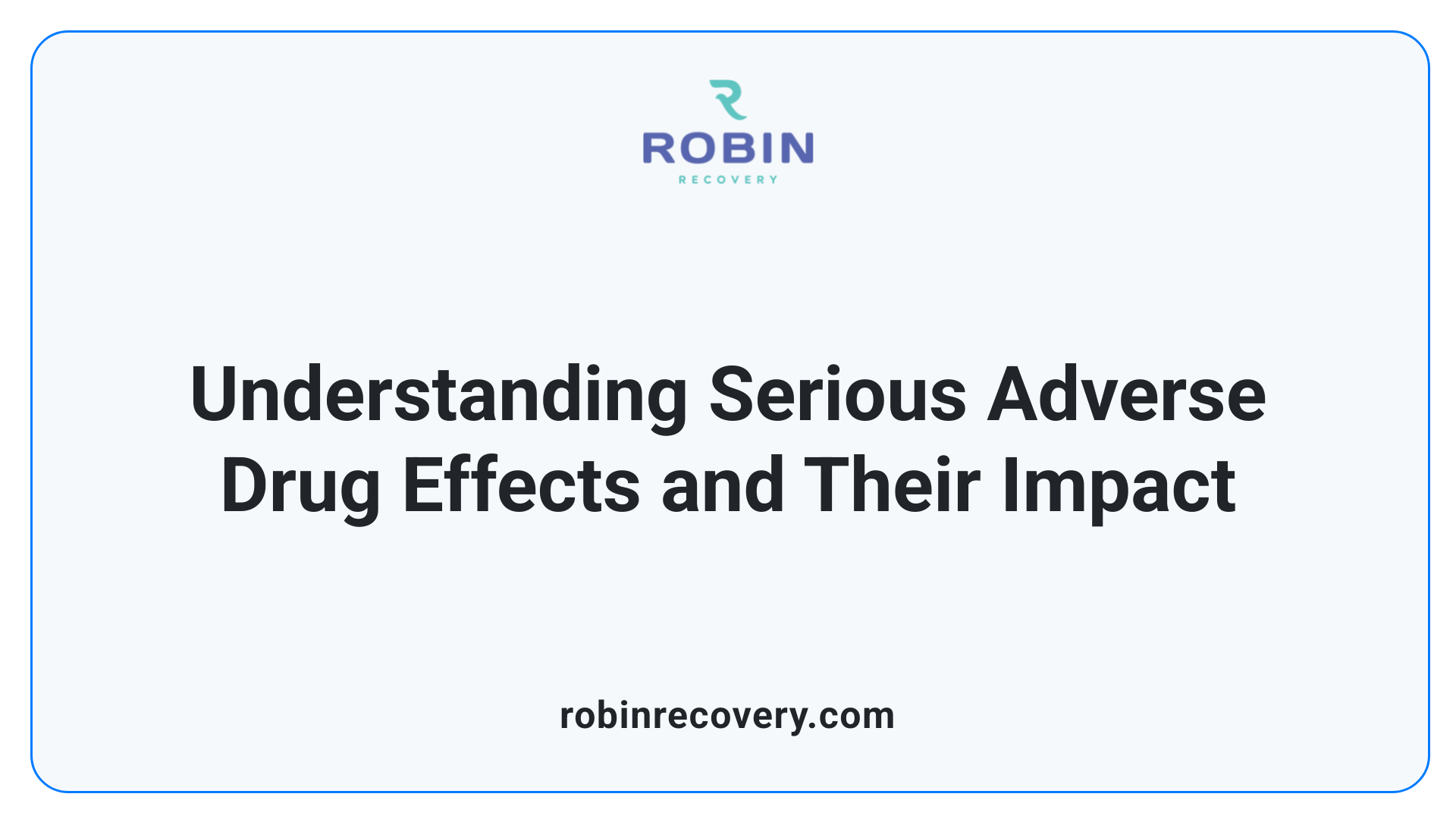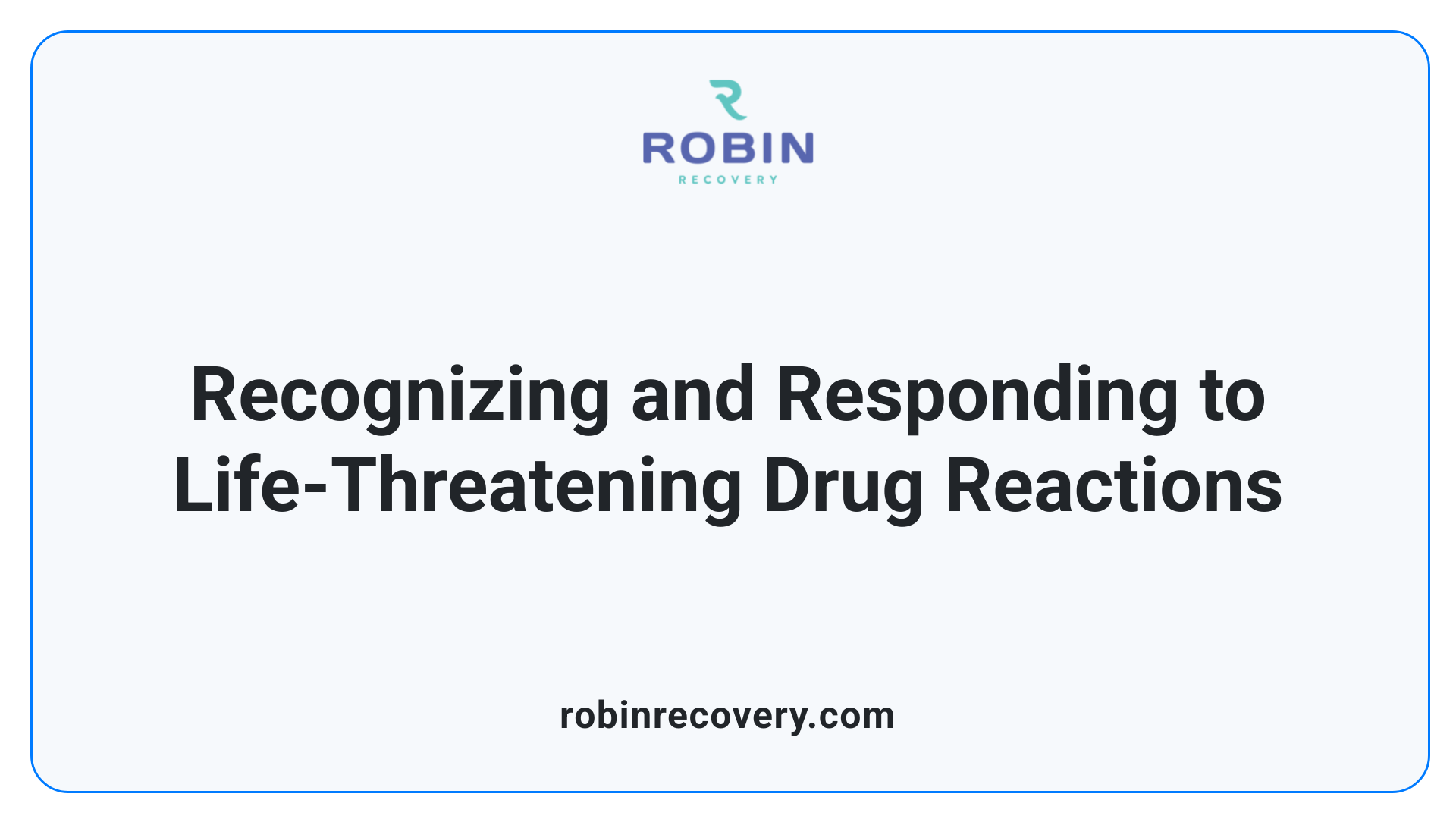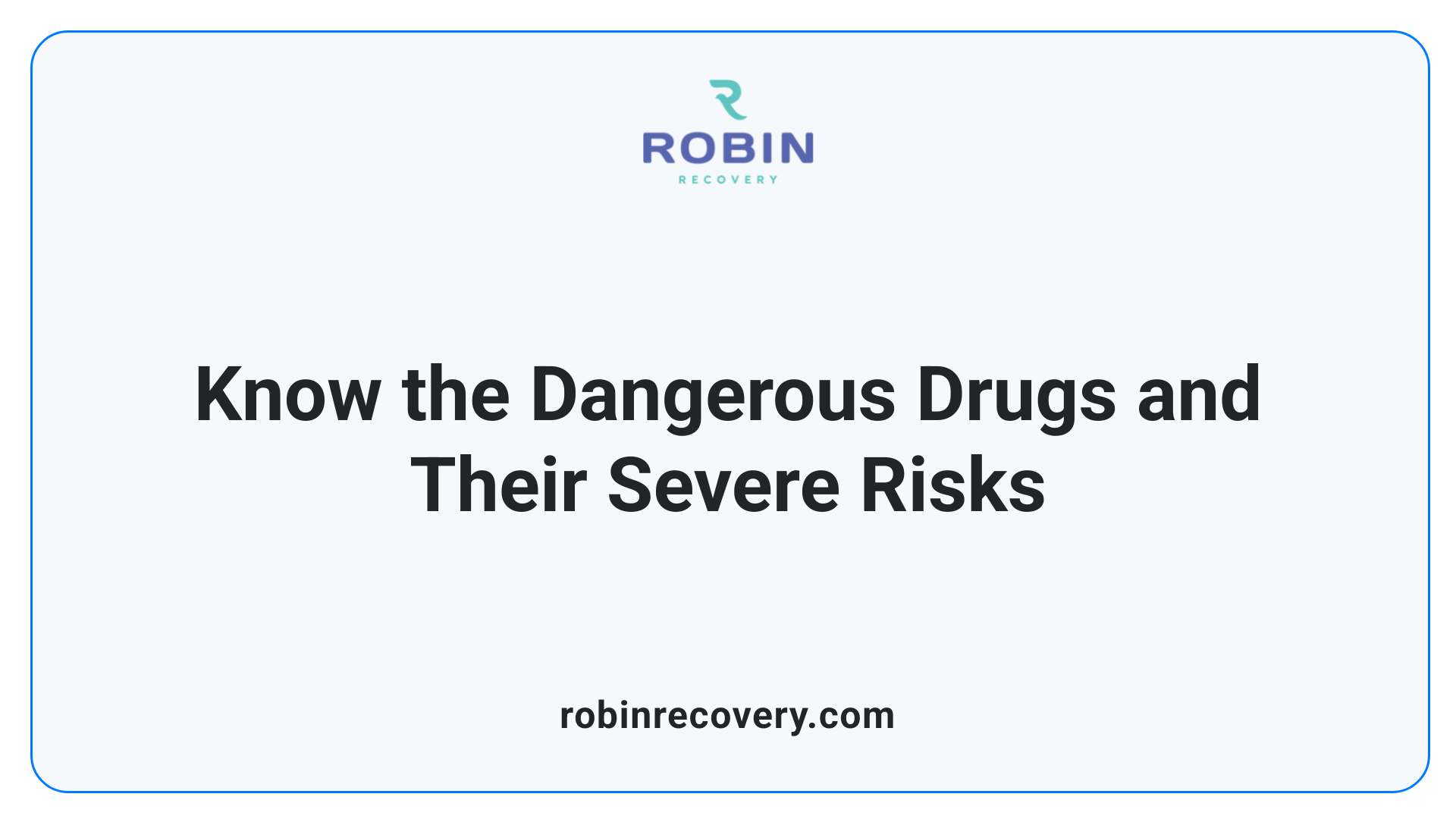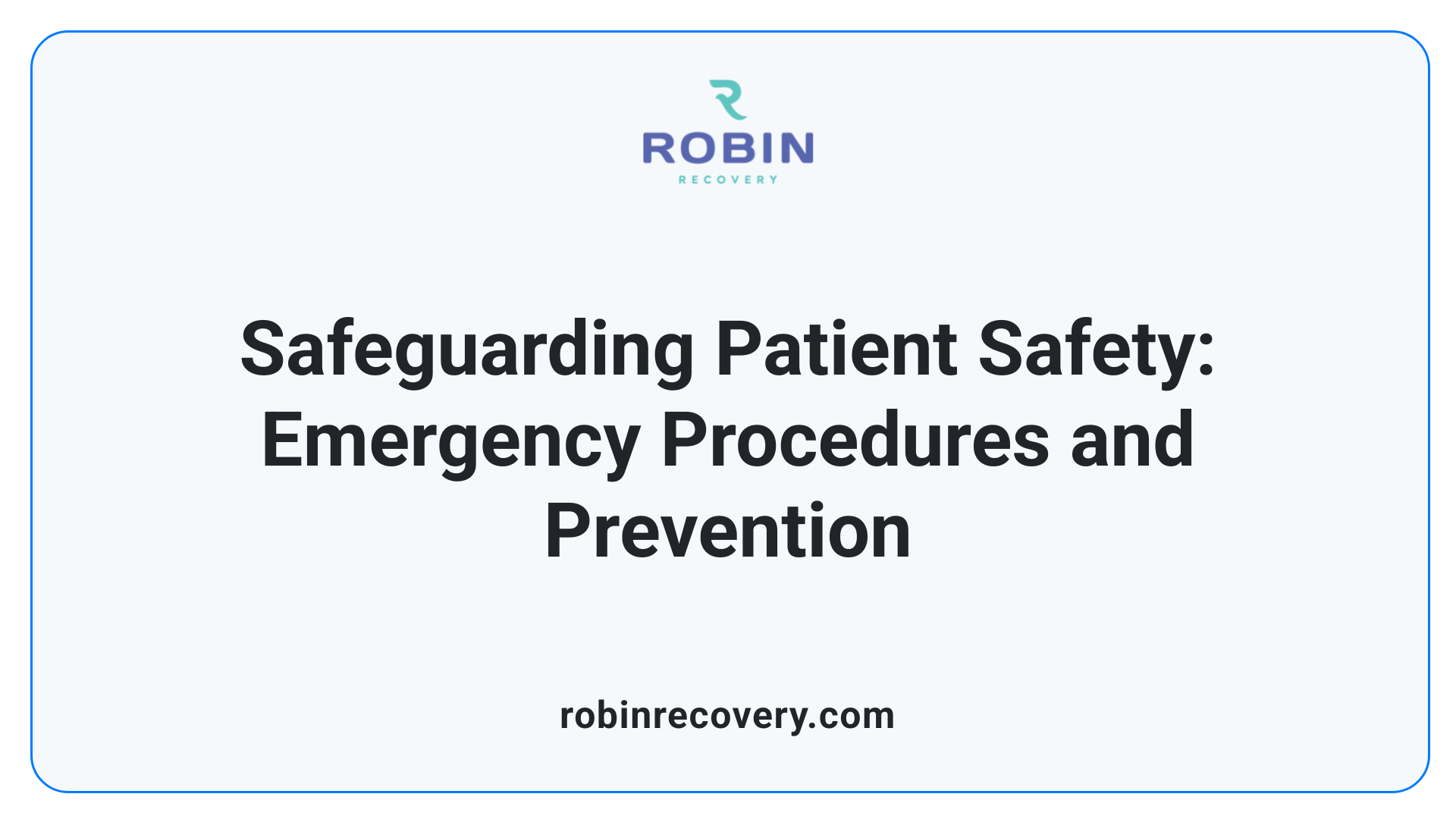Which Drug Side Effects Are Life-Threatening?

Understanding the Risks of Serious Drug Reactions
While medications have greatly improved health outcomes, some drugs carry the risk of severe adverse effects that can threaten lives. Recognizing these dangerous reactions, understanding their symptoms, and knowing how to respond are essential steps for patients and healthcare providers alike. This article explores the range of life-threatening side effects associated with medications, highlighting which drugs are most risky, how reactions can develop, and strategies to minimize these hazards.
What Are Serious Adverse Drug Effects?

What are serious adverse drug effects?
Serious adverse drug effects, often called serious adverse reactions, are harmful events caused by medications that have major health consequences. They are distinguished not just by discomfort or mild symptoms but by their ability to cause critical health outcomes.
These effects include conditions that threaten life, cause death, require hospitalization, or lead to long-term disability. They can also involve birth defects or other permanent harm. Examples include severe allergic reactions like anaphylaxis, life-threatening skin conditions such as Stevens-Johnson Syndrome, and serious internal organ issues like liver failure or heart problems.
Importantly, the classification of a side effect as serious depends on its impact on health rather than how common or mild it might seem initially. Healthcare professionals and regulators recognize the importance of identifying, monitoring, and managing these reactions to ensure patient safety.
Outcomes associated with SADEs such as death, hospitalization, or disability
Serious adverse drug effects can lead to several critical health outcomes:
- Death: Some drug reactions may be fatal if not promptly treated, such as severe allergic reactions or heart-related issues.
- Hospitalization: Many serious reactions require urgent medical intervention and extended hospital stays—for instance, severe liver damage or life-threatening infections.
- Disability: Long-term health impairment can result from reactions like nerve damage, organ failure, or chronic skin conditions.
Other serious outcomes include the need for intensive care and recovery that can be complicated or prolonged, highlighting the importance of early detection and intervention.
Regulatory perspectives and importance of monitoring
Regulatory agencies such as the U.S. Food and Drug Administration (FDA) and the European Medicines Agency (EMA) play a crucial role in monitoring drug safety.
They define what constitutes a serious adverse drug effect and require manufacturers to report these events through systems like MedWatch. Monitoring helps detect patterns or new risks associated with medications, prompting updates like warnings, restrictions, or withdrawals.
Continuous vigilance is vital because some adverse effects may occur only after many people have taken the drug or upon specific conditions, such as starting, stopping, or adjusting doses. Healthcare providers and patients are encouraged to report any suspected serious adverse effects to ensure ongoing drug safety and protect public health.
Aspect Details Additional Info Definition Harmful drug events with significant health impact Focus on outcomes such as death or disability Common Outcomes Death, hospitalization, permanent disability Highlighted by regulatory guidelines Monitoring Post-marketing surveillance and reporting Critical for early detection Regulatory Role Ensuring drug safety through warnings and actions Driven by adverse event data
Effective management of serious adverse drug effects is a collective effort among healthcare professionals, regulatory bodies, and patients, aiming to minimize risks and safeguard health.
Identifying Life-Threatening Drug Reactions and Their Types

What kind of drug reaction is life-threatening?
Life-threatening reactions to medications include a broad range of severe adverse effects, broadly classified into immune-mediated hypersensitivity reactions and severe toxicities. The most immediate and dangerous immune response is anaphylaxis, which is a Type I hypersensitivity reaction. It can develop within minutes or hours after drug exposure and quickly compromise breathing, blood circulation, and organ functions. Symptoms such as swelling of the airways, difficulty breathing, drop in blood pressure, and loss of consciousness require urgent medical intervention.
In addition to allergic reactions, severe cutaneous adverse reactions like Stevens-Johnson syndrome (SJS) and toxic epidermal necrolysis (TEN) cause extensive skin and mucous membrane damage and carry a high risk of morbidity and mortality. These reactions often necessitate intensive care, including wound management and supportive therapies.
Despite their differences, both immune hypersensitivity reactions and severe toxicities, like respiratory depression caused by opioids or acute liver failure due to overdose, can be fatal if not rapidly recognized and treated. Recognizing early symptoms is crucial for timely intervention, which may involve administering emergency medications such as epinephrine, providing supportive care, and discontinuing the offending drug.
Prevention strategies include thorough medication histories, patient education about potential side effects, and vigilant monitoring during drug therapy. Reporting ADRs to regulatory bodies like the FDA’s MedWatch program also helps improve drug safety and awareness.
High-Risk Drugs and Their Severe Side Effects

What are the most dangerous drugs with serious side effects?
Numerous medications carry significant risks that can lead to severe health complications or even death. Understanding these hazards is crucial for safe medication management.
One category of particularly dangerous drugs is ACE inhibitors, such as lisinopril, captopril, enalapril, and ramipril. Although effective for treating hypertension, they can cause angioedema, a sudden and potentially life-threatening swelling of the deeper layers of the skin, often around the face and throat, which can obstruct airflow.
Statins, including simvastatin, rosuvastatin, lovastatin, and atorvastatin, are widely used for lowering cholesterol. However, they can sometimes cause myopathy and a rare but dangerous condition called rhabdomyolysis. Rhabdomyolysis involves severe muscle tissue breakdown, which can lead to kidney failure, liver damage, and even death if not promptly treated.
Blood thinning medications such as warfarin (Coumadin) are essential in preventing blood clots but come with significant bleeding risks. Excessive bleeding can lead to hemorrhagic stroke, anemia, or severe internal bleeding, especially if drug levels are not carefully monitored.
Certain antibiotics, particularly fluoroquinolones like levofloxacin and ciprofloxacin, are necessary for bacterial infections. Nonetheless, they pose risks of serious adverse effects, including tendon ruptures, peripheral neuropathy, and aortic tears or ruptures, which can be life-threatening.
Over-the-counter pain relievers such as acetaminophen (Tylenol) and NSAIDs (e.g., ibuprofen, naproxen) are readily accessible but can cause severe liver failure if misused or overdosed. NSAIDs also increase the risk of gastrointestinal bleeding, kidney damage, high blood pressure, and elevate the chance of heart attacks or strokes.
It is crucial to use these medications only as prescribed or directed and under the supervision of healthcare professionals to avoid these severe adverse effects.
Drug Category Common Drugs Major Risks Additional Details ACE Inhibitors Lisinopril, Captopril Angioedema Swelling that can obstruct breathing Statins Simvastatin, Rosuvastatin Rhabdomyolysis Muscle breakdown leading to organ failure Blood Thinners Warfarin Excessive Bleeding Internal hemorrhage risk Antibiotics Ciprofloxacin, Levofloxacin Tendon rupture, nerve damage Potential irreversible injuries OTC Painkillers Acetaminophen, NSAIDs Liver failure, cardiovascular issues Liver toxicity and increased heart attack risk
Constant monitoring, proper dosing, and medical guidance are vital for minimizing risks associated with these high-stakes medications. Reporting adverse effects to authorities like the FDA through programs such as MedWatch also aids in improving drug safety.
Reducing the Risks and Managing Side Effects

How can side effects of medicines be reduced?
Managing the potential adverse effects of medications involves several proactive steps. First, always consult healthcare providers before starting or changing any medication. They can provide guidance tailored to your specific health condition and inform you about possible side effects.
It is crucial to follow the prescribed dosages precisely. Taking more than recommended increases the risk of severe reactions, while underdosing may reduce effectiveness.
Monitoring your response to the medication is important. Report any unusual or severe symptoms promptly to your healthcare provider. Early detection of side effects allows for timely adjustments or interventions.
Avoid misusing drugs or combining medications without medical advice. Certain drug combinations can cause dangerous interactions, such as respiratory depression or increased toxicity.
Proper storage of medicines is also essential. Keep medications out of children’s reach and store them in secure, clearly labeled containers to prevent accidental ingestion.
Furthermore, educate yourself about your medications. Understanding potential short- and long-term effects helps you recognize warning signs early. This knowledge aids in making informed decisions about your treatment and helps prevent unnecessary harm.
Finally, maintain regular follow-up appointments with your healthcare team. They can monitor for early signs of severe reactions like allergic responses, liver or kidney issues, or cardiovascular problems, ensuring safe use of your medicines.
Emergency Responses and Patient Safety

What are serious adverse drug effects?
Serious adverse drug effects, also known as serious adverse reactions, are adverse events related to a drug that have significant health impacts. These effects can be life-threatening, lead to hospitalization or prolonged hospital stays, cause substantial disability or permanent damage, or result in congenital disabilities or birth defects. The seriousness depends largely on the outcome and not solely on the occurrence of side effects.
Regulatory bodies like the European Medicines Agency (EMA) provide clear definitions to ensure healthcare providers and patients understand the risks. Monitoring and reporting these reactions help in managing and reducing their occurrence.
Recognizing symptoms of severe reactions such as anaphylaxis, SJS, TEN
Quick identification of symptoms is essential. Anaphylaxis often develops within minutes to hours and presents with hives, swelling of lips and tongue, difficulty breathing, low blood pressure, and dizziness.Severe skin reactions such as Stevens-Johnson Syndrome (SJS) and Toxic Epidermal Necrolysis (TEN) involve widespread skin detachment and mucous membrane damage. Symptoms include painful skin lesions, blistering, and high fever.Early detection of these signs can be lifesaving.
Immediate measures like administration of epinephrine, airway management
In cases of anaphylaxis, immediate administration of intramuscular epinephrine is critical to reverse symptoms. Ensuring the airway remains open is vital; this may involve oxygen therapy or advanced airway management.Positioning the patient with legs elevated can help maintain blood pressure. Supportive measures such as IV fluids and antihistamines are also used to stabilize the patient.For severe skin reactions like SJS or TEN, urgent hospital admission is necessary for wound care, fluid management, and preventing infections.
Importance of urgent medical attention and reporting
Anyone experiencing symptoms of severe reactions must seek emergency medical help without delay. Prompt treatment can significantly reduce the risk of long-term damage or death.Healthcare professionals are encouraged to report serious reactions to regulatory authorities such as the FDA’s MedWatch program. This assists in tracking drug safety signals and updating guidelines.
Role of patient awareness and education in preventing fatalities
Educating patients about potential symptoms of severe reactions helps in early recognition and swift action. Patients should be instructed to seek immediate care if they notice signs like difficulty breathing, swelling, or extensive skin reactions.Understanding the importance of adhering to prescribed doses and alertness to side effects can prevent escalation to life-threatening conditions. Taking proactive steps in collaboration with healthcare providers enhances overall safety and reduces mortality related to medication adverse effects.
Ensuring Safer Medication Use and Vigilance
Understanding which drug side effects are life-threatening and how to recognize and respond to them is vital for patient safety. Medical professionals must remain vigilant, and patients should be educated on symptoms requiring immediate medical attention. Proper medication management, reporting adverse effects, and cautious use are key to minimizing risks and safeguarding health in the face of potentially deadly drug reactions.
References
- 10 Scariest Prescription Drug Side Effects - Pharmacy Times
- Finding and Learning about Side Effects (adverse reactions) - FDA
- 5 Types of Medications with Serious Side Effects and How ... - BuzzRx
- Medication Side Effects You Shouldn't Ignore - WebMD
- Severity of Adverse Drug Reactions - Merck Manuals
- 10 Medications You Should Never Stop Abruptly - GoodRx
- Common Drug Side Effects: Types & FDA Regulations - WebMD
- Drug allergy - Symptoms and causes - Mayo Clinic
